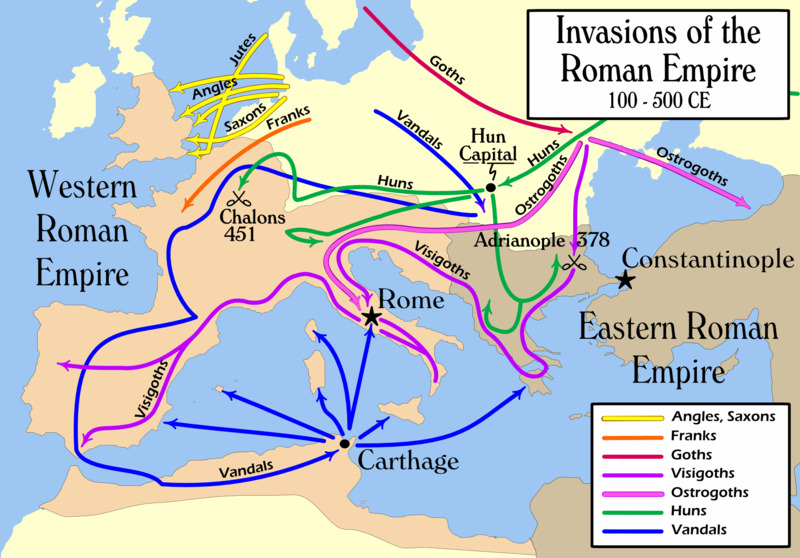Greek waves
“One of the causes for the end of the Mycenaean civilization is held to be the invasion of another Greek group the Dorians. In Greek epics these invasions are believed to represent the return of the Heracleidai, he descendents of Herakles who set out to conquer Greece from the other rulers. From the historical view point it is interesting to note that the use of the script declined after the Dorian invasion even though the Dorians were Greek speakers and could have easily adapted the Linear B themselves.” [MT11]
- Ancient greeks with Linear B script.
Population turnover
- Northeast Mediterranean really seems to have been part of a different ecumene from rest of Europe until the Migration Period/ Barbarian Invasions. Migrations back & forth to places as diverse as Syria & Northern Anatolia, but only once from the north prior to 279 BC.

Greeks
- Modern Greeks are roughly 30% Yamnaya, judging from SD202103.
- Basil II’s reconquests & the Byzantine assimilation of the Slavs of Greece changed the composition of the Greeks dramatically. An Englishman has more blood from the Britons than a modern Greek has blood from the classical Greeks.
- Modern Mainland Greeks have around 30-35% Slavic Admixture. Anatolian and Cypriot Greeks have almost none.
Ancient Greeks were never known for their blondeness, & were much darker in classical times as modern Greeks have ~40% Slavic ancestry from the 6-8th century migrations, and thus they are likely much lighter phenotypically than their ancestors :-) - AryAMsha
Alex’s yavana-s on an average probably had less IE ancestry in genetic terms than their Ir & IA adversaries. - MT
Depopulation
- (SP15, BVP15)
- Emperor Augustus would introduce legislation to increase the birthrates of the Roman nobility.
The Greek historian Polybius largely blamed the decline of the Hellenistic world on low fertility rates, writing his work The Histories that:
“In our time all Greece was visited by a dearth of children and generally a decay of population, owing to which the cities were denuded of inhabitants, and a failure of productiveness resulted, though there were no long-continued wars or serious pestilences among us…. For this evil grew upon us rapidly, and without attracting attention, by our men becoming perverted to a passion for show and money and the pleasures of an idle life, and accordingly either not marrying at all, or, if they did marry, refusing to rear the children that were born, or at most one or two out of a great number, for the sake of leaving them well off or bringing them up in extravagant luxury.”
According to Livy, by the time the Romans showed up most Greek cities were in decline, many depopulated heavily like Kroton. There is the famous case of Sparta, which dwindled down to an overgrown village, hardly a century after Polybius.
In a speech to Roman nobles, Julius Caesar commented on the low birthrates of the Roman elite:
“We liberate slaves chiefly for the purpose of making out of them as many citizens as possible. We give our allies a share in the government that our numbers may increase; yet you, Romans of the original stock, including Quintii, Valerii, Iulii, are eager that your families and names at once shall perish with you.”
Etruscans
Fortunately, recent advances in the field of archaeo-genetics have managed to clear up the situation somewhat. Showing us that while the mitochondrial DNA of ‘Etruscan’ remains may indeed tend to tether them to the pre-Indo-European populations of the neolithic (something that had generated some excitement amidst those claiming the Etruscans as a Basque-style ‘Isolate’) … the Y-chromosome analysis suggested a rather more familiarly Indo-European descent was salient. AA
Deity similarities
- “In the Roman religion the “indra-like deity” was represented by Iuppiter: an etymological cognate of Indo-Aryan dyauH-pitR^i and Greek Zeus Pater (vocative: dyauH pitaH and Zeu Pater;).” [MT ]
- “Mars had functional and iconographic similarity to kumAra the deity of para-Vedic provenance, who became a major deity among the Indo-Aryans starting from the latest-Vedic period. … An interesting feature of the iconography of Mars was his non-human representation in the form of a spear. This was particularly important in the Regia, the office of the senior-most ritualist (Pontifex Maximus; Footnote 2), which lay between the temple of Vesta (where the Roman equivalent of the gArhapatya fire was housed) and the memorial of Julius commissioned by Augustus.” [MT ]
Ritual language preservation
- “The ritual also included the chanting of the Saliaria Carmina which were ancient incantations which were part of the Roman “shruti”. They were composed in an ancient form of Italic that predated Latin and their text was faithfully handed by the ritualists along with their correct oral form. By the classical Roman period few understood their meaning they were learned by rote and deployed in the ancient language even as the ancient language of the veda is deployed by the Hindu ritualists.” [MT ]